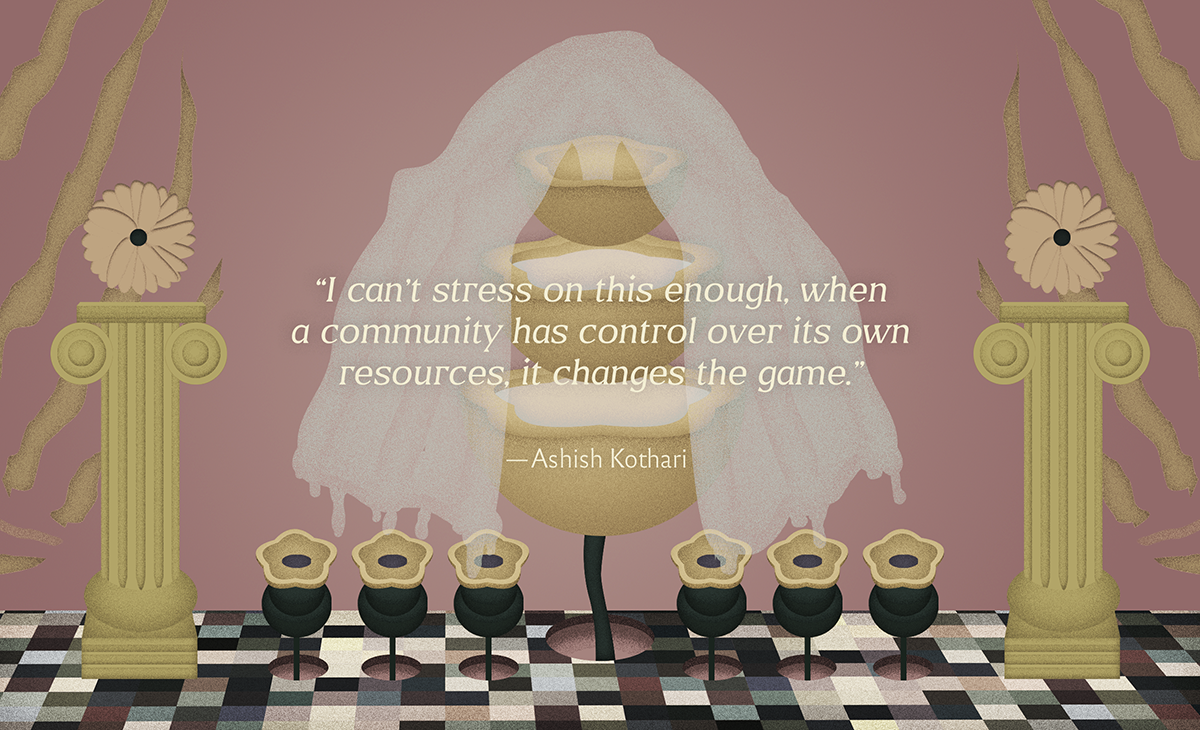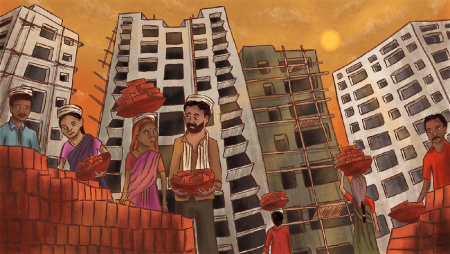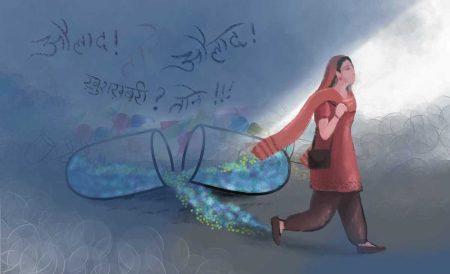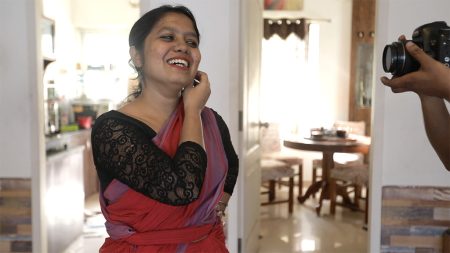As part of The Third Eye’s Public Health edition, we spoke with a wide spectrum of experts, community leaders and practitioners — what works, why it does, and what an equitable public health system could look like.
Ashish Kothari, has been a powerful force in ecological and social equity decades before they were buzzwords in India. As a teacher, activist and co-founder of the Pune-based environmental NGO Kalpvriksh, his work has been widely influential and well-known. Kothari also helps coordinate Vikalp Sangam, Radical Ecological Democracy, and Global Tapestry of Alternatives, all of them searching for alternatives to unsustainable and inequitable model of ‘development’. Here Kothari talks about his learnings from the alternative, community-driven models of health and livelihoods, which, unlike India’s urban centres, have dealt well with the pandemic.
As someone who has worked with communities for decades, and has documented alternatives to neoliberal models of development, what is the most striking thing you noted as you watched the second wave of Covid-19 unfold?
One of the things that’s been really at the core of our thinking [at Kalpavriksh] in terms of challenging the current systems of domination and development, is looking at the fundamental alternatives, especially investigating the praxis of people who are able to take care of themselves, both as individuals, but even more importantly, as collectives, as communities. And that includes taking care of livelihoods and health, the two biggest casualties in the last year and a half.
What we've seen is that communities which have either retained their sense of collective decision-making, and their rights over their own resources, have been more resilient than where people are completely dependent on either the state or private institutions/ corporations, for even something as basic as their health.
Could you share some of the community health models that struck you imaginative and thus resilient?
I can give you two examples, which we have documented. Kunariya is a village, close to Bhuj. As early as February 2020, when they first heard of Covid1-9, they set up a Disaster Management Committee: basically the Panchayat quickly swung into action. Before Covid hit, the current Sarpanch had already started bridging the gap between government departments and village citizens. Kunariya has also taken a lead in interlinking of Panchayats in the area. This village has 50% participation of women in all decision-making, which is collective.
They made Covid-19 their central focus and implemented all steps: who is coming, who is going, and are they fully tested or not tested. Going to everyone’s homes and making sure everybody’s aware of all the safety precautions. They had different sessions with children, with the youth, with old people. They made full use of social media to raise awareness and facilitated house-to-house health surveys. Only prescribed traders/producers could enter the village to sell essential commodities. Around 316 families in need were provided food aid from the Panchayat; better-off families and several farmers contributed to feed 87 of the poorest families for a month. Visually-impaired and differently-abled individuals, single women and other marginalised families were provided with food aid, necessary medicines, and other urgent and basic necessities. They also made sure that the health centre was fully equipped for emergencies.
Alongside, what they did was that they asserted that their economic activities would not stop. 106 labourers were immediately provided work through MNREGA in consultation with the local administration. This is very important, because we know that outside of the immediate health crisis, a much bigger crisis is the livelihoods crisis, which is going to affect many millions.
The other example I’d like to share is of the Tribal Health Initiative (THI), a non-profit organisation located in the Sittilingi Valley in Dharmapuri district in Tamil Nadu. THI works for the welfare of the local community in the area, the Malevasi Adivasis. THI was founded in 1993 by a young doctor couple from Kerala, Regi George, an anaesthesiologist, and Lalitha Regi, a gynecologist, who were inspired by Gandhian values. The project started with just a mud brick hut functioning as a clinic and labour room, and now has evolved into an ISO-certified, full-fledged hospital, with six doctors and 30 nurses attending to 100,000 patients a year. The initiative has brought down infant mortality rate from 157/1000 in 1993, to about 20/1000. No maternal mortality cases have been reported in Sittilingi in the last decade, and malnourishment levels in children have come down by 70%. THI’s focus is not limited to health; it has initiated a community outreach programme, an organic farming collective, a craft initiative that aims to revive Lambadi embroidery, and a programme for mobilising women entrepreneurs.
In 2020, Madheswari, a former nurse at THI, became the Sarpanch of Sittilingi. When Covid hit, she, the Tribal Health Institute and the whole Panchayat swung into action. Frequent announcements were made on autorickshaw loudspeakers. Physical distancing was enforced in all public places and all shops — except grocery shops — and hotels were closed. Migrants who had returned were quarantined and the hospital started a separate OPD. As an income-generation initiative, local tailors were asked to stitch masks in bulk for the villagers. A token system was introduced for ration distribution to prevent crowds and, in some areas, fines imposed for not following hand-washing rules. This village has hardly been affected by Covid-19.
And, of course, we all read how Nundurbar, a rural, Adivasi district in Maharashtra, was way better prepared for the second wave than any of our cities.

Nundurbar is a great example of the ‘system’ and citizen action working together seamlessly. Dharavi in Mumbai has been the other surprise.
In Dharavi, what was really interesting is that, of course, the administration was responsive [read BMC’s strategy of containment, testing and uninterrupted rations]. But the local citizens’ efforts were striking. Despite incredible densities of population, they were able to make sure that there was full information, regular testing, people helping the elderly with provisions so they don’t leave the area.
The social capital of this place, which we otherwise dismiss as a slum, was incredible. Lots of lessons to learn from that.
So, philosophically, theoretically and spiritually speaking, why do you think the community models work?
Well, first, and it sounds a bit simplistic, but I think it’s the community spirit. And this is important, and it’s deeper than it sounds. The development model, especially the westernised development model we have adopted, it tends to make people very individualistic. And not think about ourselves as a community at large. It’s there right from school where they teach you how to come first, not how the whole class moves forward. But in times of crisis, this community spirit is either sustained or revived, as we have seen in these alternative models. When people start to feel that their individual welfare is tied to their community’s welfare, you see a certain kind of transformation.
Secondly, and can’t stress on this enough, when a community has control over its own resources, it changes the game.
It could be the forest for an Adivasi community, the ocean for the fishing community, for workers in small-scale manufacturing, the tools, the machinery. Whatever your means of production are, do you control it or is it controlled by the government or the corporation? Because if it's controlled at that level, then I really don't have control over my life.
I’ll give you one more example. To me, the most inspiring group to emerge in the last 25 years is comprised of Dalit women farmers in Telangana, as the Deccan Development Society. Over the last 25-30 years, several thousand Dalit and Adivasi (pastoral) women of Zaheerabad district, Telangana, have created an agricultural revolution. Women’s collectives in over 70 villages, have revived traditional seed and livestock diversity (especially millets) in their dryland fields, turned to organic and local inputs, revived mixed and multiple cropping, created grain banks in each village for easy access, and fought for land rights to women. In the process, conditions of food insecurity and malnutrition have been transformed into adequacy and nutritional health. They also run an independent public distribution system to make sure the poor have cheap, nutritious food; and run ConFarm, a producer-consumer arrangement with 100 families in Hyderabad.
During Covid, they had no problem with food access. As they say, we use our own seeds, we use our own land, we use our own water, we use our own knowledge, we have no dependence for food on anybody outside, and what they call ‘Food Sovereignty, the Anna Swaraj’ model. And these are Dalit women, small farmers, which means in Indian society, it is a triple marginalisation. But what they have achieved, it is incredible.
These are women who were going hungry 25 years ago. But now, they distribute 1,000 glasses of millet porridge every day to municipality/ police/ health workers in Zaheerabad town, supporting the district relief measures.
You’ve written a lot around power. Is there an alternative way of looking at power outside the new neoliberal model?
One, we can have power over, which means power to dominate. Men dominating women in patriarchy, corporations dominating our economic lives in capitalism, the state dominating us, etc. Two, we can have power with, which is to say we have the power to transform our lives along with you. These are two very different notions of power. The first builds in hierarchy and inequality and domination. The second one is where one can move towards a more horizontal, more democratic space, a space where everybody can benefit.
In Maharashtra, 30 years ago, a village Mendha-Lekha was part of a movement against a hydroelectricity project, which was stopped because it would have displaced 300 villages. In this one village, a lot of discussion started around why is it that people from outside can take decisions with regard to our lives. And the discussion expanded to, okay, actually it’s not just about outsider-insider. Even within our own community, there are inequalities in power. Men take all the decisions.
Even in an Adivasi society, the political decision-making was being handled by the mukhiya and a set of mostly older men, right? And hence, 30 years ago, led by the women of the village, the Gram Sabha was revived. All decision-making in this village will be done by consensus. Everybody from the village will be involved. It won't be a Panchayat, it won't be a mukhiya. It won't be a bureaucrat or a politician from outside.
Every decision relating to the village will be taken by the village, the whole village assembly, by consensus. Their slogan roughly translates to “Bombay or Delhi mein sarkar jo hum chunte hain, lekin hamare gaon mei hum hee sarkar…”
This is what we call direct democracy or radical democracy or Swaraj.
After 13 years of discussion in the Gram Sabha, they decided that all the private land of the village will be donated into the village commons, so that there’s no private agricultural land, and land was held collectively, which also makes it virtually impossible for private players to step in and buy tracts of land.
Swaraj is not just about my freedom and independence, but it’s also about my freedom and independence with regard to your freedom and independence. If I live next to a stream and there is a village downstream, I can’t claim Swaraj and say I will dam the stream, and use all the water. But yes, I can use the water to the extent I need and make sure that there’s enough water also downstream and further downstream. And then I won’t set up something here, which will pollute the water downstream. Now, this kind of thinking is not there in our development mindset nor in our cities. As urban citizens we feel entitled that we will take as much from the villages, and send our waste back to them in return. Then we call them names, call them village bumpkins.
So, we’re trying to challenge this kind of mindset and show what’s possible through much more direct rights and responsibilities, power and responsibilities.
This also means building capacity. Because you know, for the last 200 years, we’ve been told that sit back and we’ll do it for you. The government has been saying that and now we see the consequences. We will do the health thing for you, don’t worry. Or if we can’t, we can get the private sector to do it for you. Look where that got us.
So, build capacity, build capacity for women to be able to speak freely, to make decisions for their communities, to lead.

The thing is, even khaap panchayats say its direct democracy. How do you resolve that within this point of view?
This has troubled us at Kalpavriksh from the beginning. And in Vikalp Sangam [which is a group of about 70 organisations and movements around the country, working across the areas of social justice] we developed a concept/heuristic called The Flower of Transformation — a flower with five petals. And we are saying these five petals lead to holistic transformation; so political transformation is the first petal, which is direct democracy. The second is economic democracy, which is local collective control over resources. But the third, most crucial component is social justice, where for every such local democracy there also need to be simultaneous struggles for gender justice, against casteism, etc., and all of it has to happen simultaneously for it to emerge as a valid alternative. Otherwise, local democracy can be the worst.
The fourth petal is cultural diversity, which includes, languages, food system and knowledge systems. Interestingly, all the models that worked in Covid-19 are a hybrid system where they accepted outside knowledge, and built on their traditional knowledge with that. And the fifth is ecological resilience and sustainability. And the core of this flower of transformation are a set of values: for instance, a feeling of solidarity, a feeling of the love, generosity, diversity, autonomy, simplicity, interconnectedness, reciprocity. These sorts of fundamental values are at the heart of this. Just using direct democracy models as they exist, is not the answer. It has to be challenged by newer forces – gender and caste to be specific – and anchored in fundamental values.
In our current public health crisis, how would you see these models could be replicated or scaled up?
Neither is upscaling or replicating the right way to go. That’s are very corporate way of doing things.
What to need to do is outscale, which means that what Adivasi women and Dalit women are doing, we can learn from it and see what principles they have applied.
Looking for other community models that survive the odds? A listicle.
http://www.fao.org/in-action/food-for-cities-programme/news/detail/en/c/1272232/





